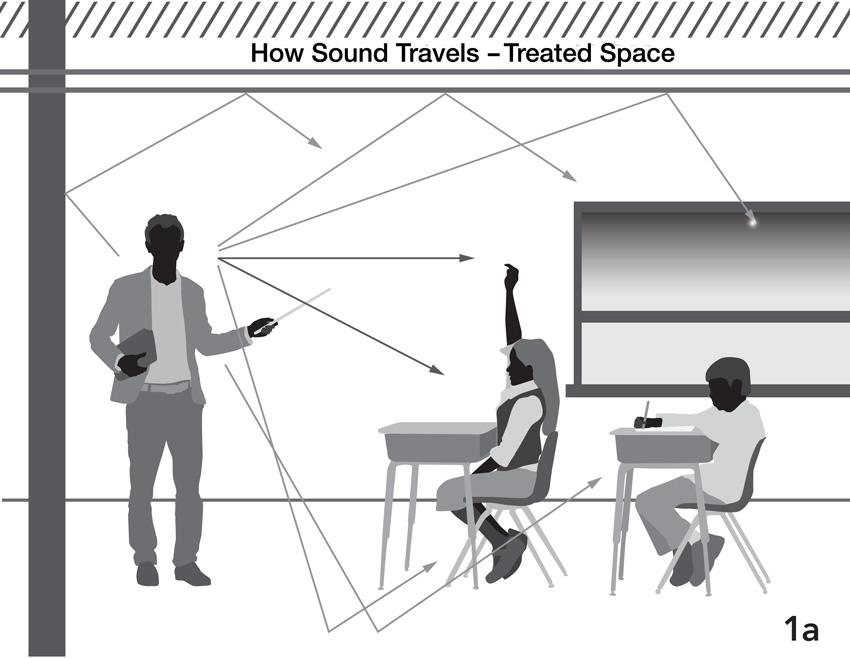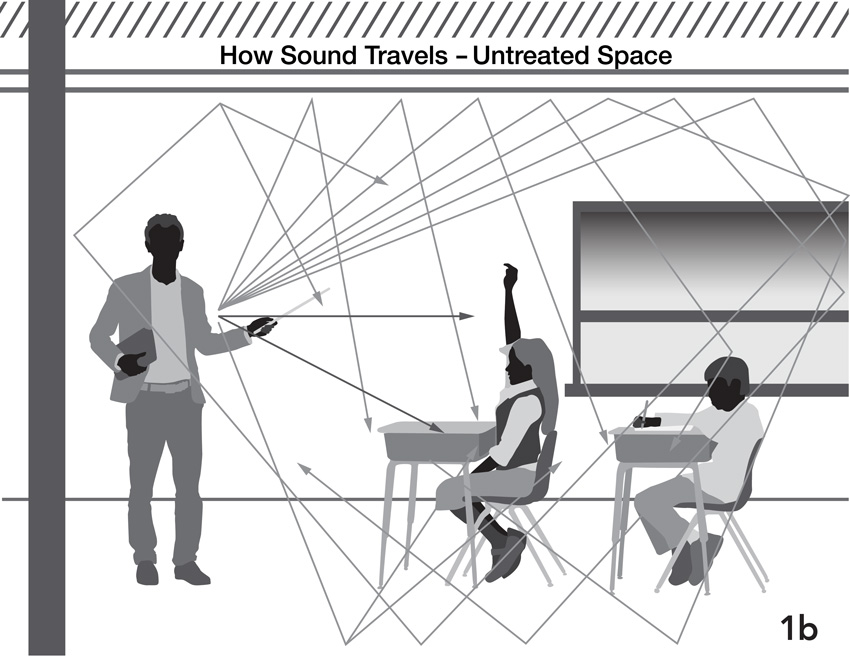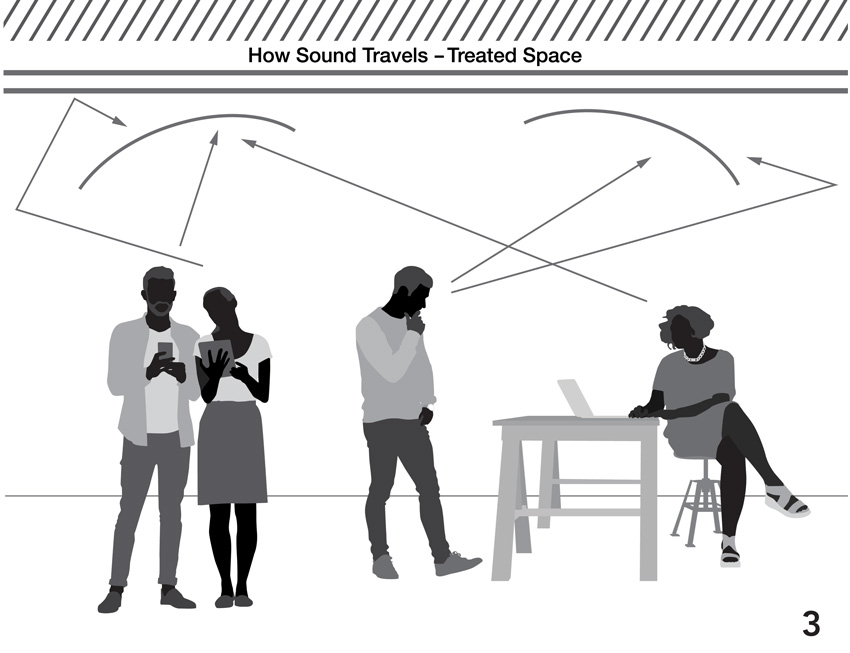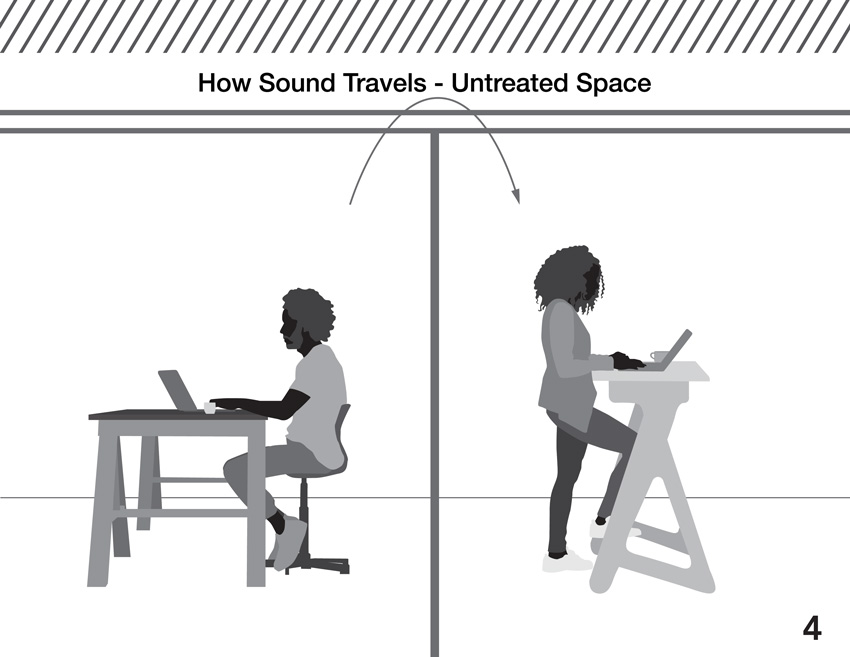New Acoustical Options in Specialty and Seamless Ceiling Systems
Learning Objectives:
- Identify and recognize the basic principles of acoustics as they relate to the design of interior architectural spaces.
- Investigate the design potential and innovative opportunities of different types of acoustical ceilings that also offer quality design solutions.
- Assess the acoustical performance of different types of ceiling systems and their applicability to different building type settings.
- Explore successful applications of the principles and concepts presented through the use of case study examples of building projects.
Credits:
This course is approved as a Structured Course
This course can be self-reported to the AANB, as per their CE Guidelines
Approved for structured learning
Approved for Core Learning
This course can be self-reported to the NLAA
Course may qualify for Learning Hours with NWTAA
Course eligible for OAA Learning Hours
This course is approved as a core course
This course can be self-reported for Learning Units to the Architectural Institute of British Columbia
Many architects and specifiers mistakenly believe that when choosing specialty ceilings to achieve a particular design vision, they must sacrifice good acoustical performance for aesthetics or sustainability. In fact, that is no longer the case since there are new products that offer excellent acoustical performance as well as extensive design options and sustainability. This is welcome news since poor architectural acoustics can be annoying or distracting such that they can impede concentration, comprehension, confidentiality, healing, or learning. By contrast, strong acoustical design can reduce unwanted noise and create useful, inspiring, and helpful interior spaces. This course will provide an awareness of some current options available to combine design excellence with good acoustics while helping to create better, more effective, and more sustainable building projects.
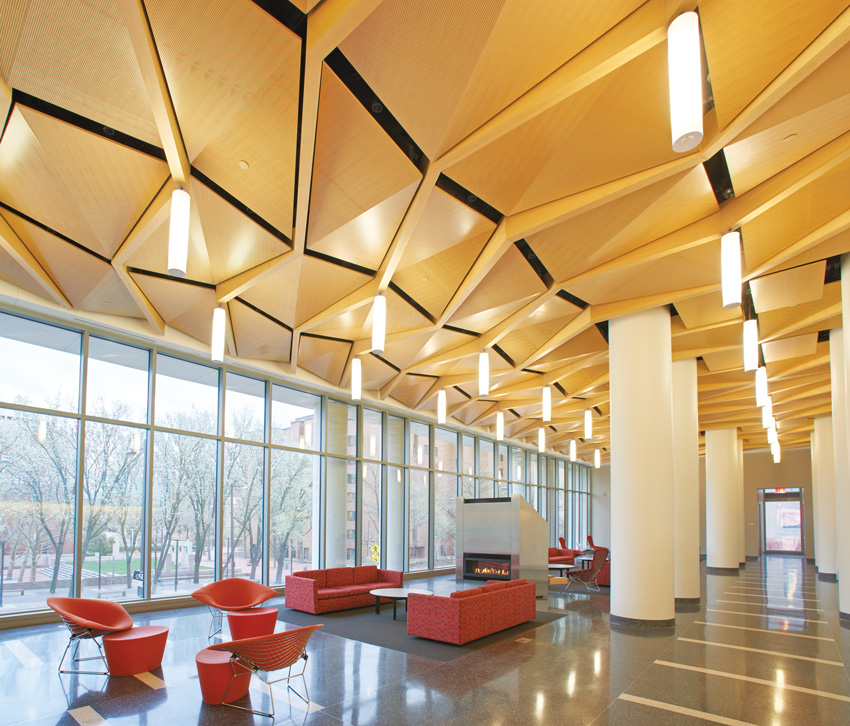
All photos courtesy of Armstrong Ceiling and Wall Solutions
Providing both quality design and acoustical performance is possible in many different building interiors due to new products and innovations that are now commercially available.
Acoustics Fundamentals Overview
Acoustics is the scientific study of sound in all its forms, and architectural acoustics is specifically related to the interactions of sound both within and between architectural spaces. Professionals, specialists, and scientists have studied sound in terms of its generation, transmission through space and objects, and reception by people. In all cases, sound radiates outward from the source, of which there are many, both inside and outside of buildings. Sound is typically characterized by its loudness and frequency content, such that loudness is measured in decibels (dB) and frequency is measured in Hertz (Hz).
The sound as heard within a space will be a combination of direct sound from the sources and sound reflected off the various surfaces within the space. Highly reflective surfaces will redirect sound without significant changes except for direction. In large, very ‘hard’ rooms, those reflections can result in long delay times for arrival at the listener, causing echoes. On the other hand, highly sound-absorptive surfaces will diminish the reflected sound waves and reduce reverberation and echoes. Based on these different interactions between sound and spaces (i.e., room size and shape and the acoustic treatments within or between spaces), people can experience different levels of speech intelligibility, speech privacy, or unwanted sound intrusion. Hence, good acoustical design for a given space is a matter of finding the right combination of sound absorption and sound attenuation (blocking) using several well-developed tools to balance the acoustic characteristics within that space. (See sidebar.)
While the science-based study of architectural acoustics has developed to a rather sophisticated level, the good news is that acoustical materials and products have also advanced based on that science. Since the product manufacturers provide all of the needed testing and report the results, architects, interior designers, and acoustical consultants can now make better informed, more holistic decisions about many of the materials and products used within a space. This is particularly true when it comes to ceilings, which are a significant surface in the acoustical characteristics of virtually all spaces. Selecting those materials based on the needs of different types of spaces is also important and has similarly been studied and investigated. A brief overview of some of the more common architectural building types where acoustics is a particular concern follows.











